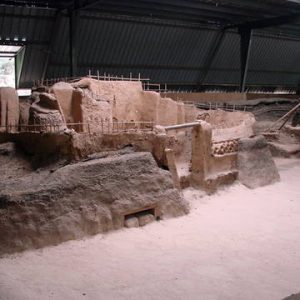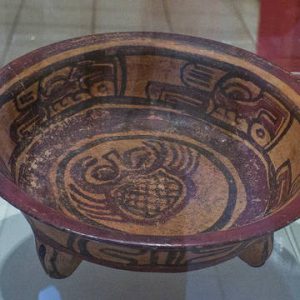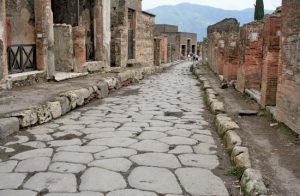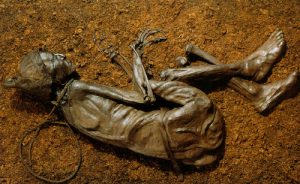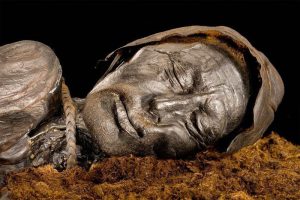In 1974, whilst digging a well outside the Chinese city of Xi’an, China, workers unearthed a life-sized warrior made of clay. Once archeologists arrived, they discovered more warriors, numbering in the thousands. Each warrior’s armor and facial expressions are slightly different. The warriors are positioned due to rank. Emperor Qin Shi Huang Di ordered the construction of the structures. To date, four pits have been dug, three of which uncovered warriors, horses, carriages, and weapons.
When studying or discovering these pits, one may be inclined to presume that China under Emperor Qin was more warfare based, or that Emperor Qin valued his soldiers and military prowess most and therefore wished to be buried alongside such things.
Since then, many nearby archeological sites have been located through excavation, remote-sensing, and ground-penetrating radar. These additional findings have located over 600 more pits, one of which was the Emperor’s tomb that amasses almost 38 square miles. These further observations and studies have provided archeologists and other researchers with more knowledge about the Terra Cotta Warriors site and Emperor Qin.
Since the initial pits were studied, researches have discovered countless other artifacts that help decipher more about the site and Emperor Qin. For instance, clay figures of acrobats and musicians have been found. In addition, life-sized figurines of swans, cranes, ducks, and other animals were located. Experts found evidence of European techniques used on artifacts. Therefore, could Europeans have influenced the construction and furnishing of the Terra Cotta site? This added another layer of complexity and meaning to the previous notions about the Terra Cotta archeological site and Emperor Qin.
Approximately 700,000 workers are believed to have worked to create the site. Found alongside the worker’s graves are government officials’ graves. These sites show a distinct structural organization by which the Emperor was able to construct such a massive complex. Following the Emperor’s death, experts have determined from artifacts and skeletons of the Emperor’s family that a family blood-war over power occurred. From skeletons of princes and the destruction of Terra Cotta warriors and artifacts, archeologists determined that some of the pits had been raided and partially destroyed during the blood-wars.
From the more recent findings and studies, researchers have asserted that the Terra Cotta site actually represented Emperor Qin’s court in his lifetime; it represented his surroundings and what he valued. Soldiers, animals, government officials, and other objects were discovered at the site. These provided knowledge as to the size and organizational complexity of the Qin Dynasty. Historians and Archeologists believe the site serves as an replica of the societal organization of the Qin Dynasty. When first explored and studied, many believed that the site merely contained clay statues of soldiers. Today we know it contains many more artifacts, which provide in depth insight into the organization and life during the Qin Dynasty.
Sources:
http://news.nationalgeographic.com/2016/10/china-first-emperor-terra-cotta-warriors-tomb/
http://www.smithsonianmag.com/history/terra-cotta-soldiers-on-the-march-30942673/?no-ist%2C=&page=1
Image Sources:
http://science.nationalgeographic.com/science/archaeology/emperor-qin/
http://www.chinatourguide.com/xian/hanyangling_museum.html
Further Reading:
http://www.dailymail.co.uk/news/peoplesdaily/article-4207676/China-faking-famous-terracotta-warriors.html
Chinese Authorities Smash Fake Terracotta Warriors Attraction





